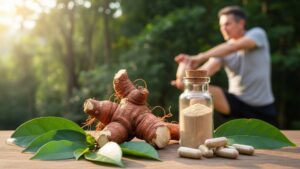Introduction
Herbal teas are celebrated for their calming effects, digestive benefits, and natural ingredients. Yet these very qualities can be undermined by one hidden danger: pesticide contamination. Consumers assume that teas, especially those labeled organic or wellness-focused, are pure and safe. But in truth, teas can contain residues of pesticides used during cultivation or inadvertently introduced during processing and storage.
This guide is designed for organic wellness tea brands, herbal tea formulators, private-label producers, and bulk ingredient buyers. It walks you through why pesticide testing matters, what regulations apply, how contamination occurs, and the best ways to test and stay compliant.
Why Teas Are at High Risk for Pesticide Contamination
Many herbs used in teas are grown in developing countries where pesticide use is poorly regulated. Even when herbs are cultivated organically, they may be exposed to pesticide drift, contaminated irrigation water, or cross-contamination during transport or processing.
Common risk factors include:
- Imported herbs from high-risk regions
- Dried products absorbing residues more easily
- Multiple blending steps that introduce variables
- Use of pesticides for storage and transport pest control
Because teas are steeped in hot water, any residual pesticide can be extracted into the final beverage—posing a real risk to health-conscious consumers.
Which Pesticides Are Commonly Found in Teas?
Pesticide residues in teas often include:
- DDT and derivatives: Still used in some regions despite bans
- Organophosphates (e.g., chlorpyrifos): Neurotoxic at low levels
- Neonicotinoids (e.g., imidacloprid): Harmful to pollinators and linked to neurological effects
- Glyphosate: Widely debated and often found in conventional tea blends
- Pyrethroids: Commonly used and persistent in dry herbs
In some cases, teas have tested positive for 10–15 different pesticide compounds in a single sample.
Pesticide Regulations and Maximum Residue Limits (MRLs)
United States (FDA + EPA)
- No specific limits for teas, but default to EPA-set MRLs for each pesticide/commodity
- Organic products must meet USDA National Organic Program (NOP) standards, which prohibit synthetic pesticide residues
European Union
- Enforces MRLs for individual pesticides in specific herbal matrices
- Regulation (EC) No 396/2005 specifies limits; EU is generally stricter than the U.S.
Codex Alimentarius
- Offers internationally recognized MRLs used in global trade
- Many countries base their standards on Codex to facilitate exports
Testing and adhering to these limits is essential to avoid failed audits, rejected shipments, and consumer mistrust.
Who Should Test Their Tea Products for Pesticide Residues?
- Organic and wellness tea brands
- Exporters selling into the EU or Asia
- Retailers with house-branded herbal teas
- Supplement companies using tea ingredients
- Third-party formulators or contract manufacturers
Even if you source from a “certified organic” farm, routine verification testing is recommended to detect accidental exposure.
When and How Often Should You Test?
Testing frequency depends on your risk exposure, but a good baseline includes:
- New supplier or raw material: Always test the first batch
- Each lot for high-risk herbs (e.g., chamomile, mint, lemongrass)
- Quarterly or seasonal testing for recurring ingredients
- Post-formulation testing for final blended teas or infusions
High-volume brands may benefit from implementing a routine quality control (QC) program with recurring spot checks.
Testing Methods for Pesticide Residue in Herbal Teas
The most reliable methods for multi-residue pesticide testing include:
1. GC-MS/MS (Gas Chromatography-Tandem Mass Spectrometry)
- Excellent for volatile and semi-volatile pesticides
- High sensitivity and specificity
2. LC-MS/MS (Liquid Chromatography-Tandem Mass Spectrometry)
- Ideal for non-volatile pesticides
- Detects compounds like glyphosate, imidacloprid, and chlorpyrifos
3. QuEChERS Extraction Method
- Industry standard for multi-residue pesticide prep
- Fast, cost-effective, and reliable
A comprehensive panel typically screens for 200–300 pesticides with detection limits in the parts-per-billion (ppb) range.
Sample Requirements and Submission Tips
To get accurate results:
- Send 50–100g of dried, representative tea or herbal sample
- Use clean, sealed, food-safe packaging
- Label with lot number, product name, and date
- Avoid contact with plastic bags that may leach or absorb compounds
Testing dried ingredients ensures better precision than testing brewed tea, which may dilute residues.
Understanding Your Pesticide COA (Certificate of Analysis)
A typical COA includes:
- Pesticide name and group
- Detected amount (mg/kg or ppb)
- Detection limit
- Whether the result is “ND” (not detected) or quantified
- Regulatory reference (EPA, EU MRL)
Labs like Qalitex Laboratories provide easy-to-read reports and consultation if a compound exceeds allowable levels.
What to Do If Your Product Fails a Pesticide Test
If you receive a result above the regulatory limit:
- Isolate the affected batch immediately
- Consult your supplier and request transparency or audit documentation
- Request a confirmatory test from a second lab
- Document your actions to demonstrate quality control
- Consider reformulating or sourcing alternative herbs
In some cases, blending contaminated lots with cleaner material may dilute residue below the limit—but this must be legally permissible in your target market.
Costs and Turnaround Time for Pesticide Testing
| Test Type | Price Range | Turnaround |
|---|---|---|
| Basic multi-residue panel (100+) | $275–$400 | 5–7 days |
| Expanded panel (200–300) | $450–$700 | 7–10 days |
| Single compound (e.g., glyphosate) | $150–$250 | 3–5 days |
Costs may vary by region, matrix type, and number of compounds requested. Volume discounts are often available.
How to Choose the Right Testing Lab
Partner with a lab that offers:
- ISO 17025 accreditation
- Botanical testing experience
- Comprehensive multi-residue panels
- Fast turnaround
- Regulatory interpretation assistance
Qalitex Laboratories offers validated pesticide residue testing for teas, botanicals, and dietary supplement ingredients. We help ensure your products meet both U.S. and international standards.
Frequently Asked Questions (FAQs)
Q: Does organic tea require pesticide testing?
A: Yes. While synthetic pesticides are banned, cross-contamination and residue drift are possible. Testing confirms compliance.
Q: Is it enough to rely on my supplier’s COA?
A: It’s a good start, but you should validate with independent testing to ensure the batch you receive matches the report.
Q: Can pesticide residues be removed?
A: No. Once absorbed, residues cannot be washed or processed out of the dried plant material. Prevention is key.
Q: Can I export tea without testing?
A: Technically yes, but most countries require proof of compliance. Failing to test can result in customs holds or rejections.
Conclusion: Testing Builds Trust and Opens Markets
Pesticide testing in herbal teas isn’t just a regulatory requirement—it’s a brand differentiator. Consumers trust products that go above and beyond to ensure safety. Whether you’re targeting Whole Foods shelves or EU herbal markets, pesticide testing ensures your teas meet both ethical and legal expectations.
Make it a core part of your quality assurance strategy.
Partner with Qalitex Laboratories for expert, ISO 17025-accredited pesticide residue testing tailored to herbal teas, botanicals, and dietary supplements. Contact us today to learn more.
This guide is published by Qalitex Laboratories — specialists in chemical and microbiological testing for teas, supplements, cosmetics, and persona





